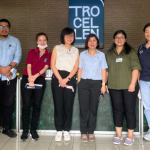Building upon the foundational insights from Ancient Trials and Modern Mysteries: From Gods to Games, we delve deeper into how ancient ritual practices continue to influence contemporary culture. These rituals, once vital to societal cohesion and spiritual expression, are now often reimagined through modern reenactments, blending tradition with innovation. This exploration uncovers the layers of symbolism, cultural significance, and evolving interpretations that shape our understanding of ancient ceremonies today.
1. Rediscovering Ancient Rituals: Pathways to Understanding Cultural Significance
a. How do ancient rituals serve as expressions of societal values and spiritual beliefs?
Ancient rituals functioned as tangible expressions of a society’s core values and spiritual beliefs. For example, the Egyptian Osiris rites symbolized themes of death, rebirth, and divine judgment, reinforcing societal notions of morality and the afterlife. Similarly, the Greek Eleusinian Mysteries encapsulated the community’s spiritual pursuit of divine knowledge and immortality. These rituals often involved elaborate ceremonies, symbolic objects, and specific actions that reinforced social cohesion and spiritual identity, serving as communal affirmations of shared beliefs.
b. What symbolic elements are preserved in modern reenactments of these rituals?
Modern reenactments tend to preserve key symbolic elements such as masks, costumes, sacred objects, and choreographed movements. For instance, contemporary Passover Seders retain symbolic foods and recitation, echoing ancient Israelite practices. In reenacting indigenous rituals, participants often use traditional attire and instruments, maintaining a tangible link to ancestral heritage. These symbols serve as visual and experiential anchors, helping participants and spectators connect with the original spiritual intent.
c. In what ways do these rituals evolve to fit contemporary cultural contexts?
To remain relevant, rituals adapt by integrating modern themes, language, and contexts. For example, some Native American ceremonies incorporate contemporary music or storytelling styles to resonate with younger generations, while still honoring traditional symbolism. Additionally, global festivals like Diwali are celebrated worldwide with local adaptations, blending traditional elements with modern cultural expressions. This evolution ensures that rituals remain meaningful and accessible, bridging the gap between ancient origins and present-day identities.
2. The Role of Mythology and Symbolism in Ritual Reenactments
a. How do mythological narratives influence the design of modern ritual reenactments?
Mythological stories serve as foundational narratives that shape the structure and symbolism of modern reenactments. For example, the myth of Perseus slaying Medusa influences modern theatrical re-enactments that dramatize heroism and divine intervention. These stories guide the choreography, costume design, and symbolic gestures, ensuring that the core themes of myth—such as sacrifice, transformation, and divine justice—are communicated vividly. Reenactments often highlight key moments from myth, allowing audiences to experience the narrative’s moral and spiritual lessons anew.
b. What symbols from ancient rituals are most prominently featured today?
Prominent symbols include sacred objects like the Egyptian ankh representing eternal life, and the Christian cross symbolizing sacrifice and redemption. In modern rituals, such symbols are often incorporated into visual displays, costumes, or ceremonial acts. For example, the use of fire in Solstice celebrations symbolizes renewal, while the lotus flower in Asian rituals signifies purity and spiritual awakening. These symbols act as conduits for conveying complex spiritual concepts across cultural boundaries.
c. How does reinterpretation of mythological themes deepen our understanding of historical beliefs?
Reinterpreting mythological themes allows contemporary audiences to explore underlying values and worldviews of ancient cultures. For instance, modern analyses of the Greek myth of Orpheus have shed light on ancient concepts of love, loss, and the power of art. By reimagining these stories in new contexts, scholars and practitioners uncover layers of meaning that reveal how past societies understood morality, existence, and the divine. This dynamic reinterpretation fosters a richer appreciation of historical beliefs and their relevance today.
3. Archaeological and Ethnographic Insights into Ritual Practices
a. What recent discoveries have shed light on the mechanics of ancient rituals?
Recent archaeological excavations have uncovered ritual sites such as the Göbekli Tepe in Turkey, dating back over 11,000 years. These sites include carved pillars with intricate symbols, suggesting complex ritual practices involving communal gatherings and spiritual symbolism. For example, the discovery of ritual pottery with symbolic engravings in China’s Liangzhu culture indicates sophisticated ceremonial activities linked to fertility and cosmology. Advances in dating techniques and residue analysis continue to reveal the material aspects of ancient rituals, providing tangible links to past beliefs.
b. How do ethnographic studies of indigenous cultures reveal the continuity of ritual practices?
Ethnographic research demonstrates that many indigenous communities maintain ritual traditions that have persisted for centuries. For example, the San people of Southern Africa continue to perform trance dances that symbolize spiritual communication with ancestors, reflecting practices documented by anthropologists over decades. These studies reveal a remarkable cultural resilience, showing how rituals adapt over time but retain core symbolic elements. Such continuity underscores the importance of rituals in maintaining cultural identity and spiritual coherence across generations.
c. Can contemporary rituals be considered authentic re-creations or modern adaptations?
Contemporary rituals often blend authentic traditional elements with modern influences, leading to a spectrum from genuine reenactments to innovative adaptations. For instance, some indigenous ceremonies incorporate contemporary music, dance, or storytelling techniques, which may differ from historical practices but serve similar spiritual functions. Scholars argue that authenticity is context-dependent; what matters is whether the ritual maintains its symbolic integrity and cultural relevance, regardless of modern modifications.
4. Psychological and Sociological Dimensions of Ritual Reenactments
a. What psychological needs do people fulfill through participating in ritual reenactments?
Participation in rituals satisfies fundamental psychological needs such as belonging, identity affirmation, and meaning-making. For example, reenacting traditional dances or ceremonies can foster a sense of community coherence and personal purpose. Psychologists highlight that rituals activate neural pathways associated with social bonding and emotional regulation, providing comfort and stability in times of change or crisis.
b. How do social dynamics shape the authenticity and meaning of modern rituals?
Social factors such as community consensus, cultural pride, and political context influence how rituals are performed and perceived. For instance, in post-colonial societies, indigenous rituals may be revitalized as acts of cultural resistance, lending them new layers of meaning. Conversely, commercialization or commodification can dilute authenticity, transforming rituals into entertainment. The social environment thus plays a crucial role in shaping the ritual’s significance and integrity.
c. Are modern reenactments serving as a form of cultural preservation or innovation?
Many modern reenactments function both as preservation and innovation. For example, the revival of Viking festivals often combines historical reenactments with contemporary festivities, blending education with entertainment. These activities help safeguard intangible cultural heritage while adapting it to current social contexts, ensuring the continuity and relevance of ancient traditions.
5. Technology’s Influence on Reviving and Reinterpreting Rituals
a. How are digital media and virtual reality used to recreate ancient rituals?
Innovative technologies enable immersive experiences of ancient rituals. Virtual reality (VR) platforms simulate sacred sites like Stonehenge or Machu Picchu, allowing users to virtually participate in solstices or ceremonies. Digital media also facilitates the reconstruction of rituals using 3D modeling and augmented reality, making sacred practices accessible to global audiences. For example, VR reconstructions of Egyptian funerary rituals enable learners and enthusiasts to explore complex ceremonies without physical constraints.
b. What are the benefits and risks of using technology to simulate sacred practices?
Benefits include increased accessibility, educational value, and preservation of intangible heritage. However, risks involve potential disrespect, trivialization, or misrepresentation of sacred elements. Over-reliance on virtual simulations may detach practitioners from the spiritual essence, leading to superficial engagement. Ensuring respectful and accurate portrayals requires collaboration with cultural custodians and scholars.
c. How might future technological advancements further deepen our engagement with ancient rituals?
Emerging technologies like artificial intelligence and haptic feedback could enable more personalized and sensory-rich ritual experiences. For instance, AI-driven virtual guides could narrate mythological stories dynamically, while haptic devices simulate tactile aspects of ritual objects. Such innovations promise to bridge the gap between physical presence and digital immersion, fostering a deeper, more meaningful connection with ancient traditions.
6. Ethical Considerations and Cultural Sensitivity in Ritual Reenactments
a. What are the potential cultural appropriation issues involved?
Cultural appropriation arises when external groups adopt or adapt rituals without understanding or respecting their original context, often commodifying sacred practices. For example, non-indigenous performers reenacting Native American ceremonies can inadvertently perpetuate stereotypes or distort meanings. Such actions can cause offense and undermine cultural sovereignty, emphasizing the importance of respectful engagement and consultation with cultural custodians.
b. How can modern practitioners ensure respectful and accurate representations?
Practitioners should collaborate with cultural elders, scholars, and community members to ensure authentic and respectful portrayals. Participating in cultural exchange programs, obtaining permissions, and prioritizing education over entertainment are essential steps. Transparency about the origins and significance of rituals fosters trust and promotes genuine understanding.
c. What role do communities play in authenticating and guiding ritual reenactments?
Communities are the custodians of their traditions, providing essential oversight and guidance. Their involvement ensures rituals are performed in accordance with cultural protocols and spiritual significance. For example, the Maori’s Tikanga protocols dictate how and when rituals are conducted, emphasizing the community’s authority in maintaining authenticity. Respectful collaboration with communities safeguards cultural integrity and enriches the reenactment experience.
7. Connecting Ancient Rituals to Personal and Collective Identity
a. How do ritual reenactments foster a sense of belonging and cultural pride?
Reenactments serve as active expressions of cultural heritage, reinforcing identity and pride. For example, the Panathenaic Festival revival in Greece reconnects modern citizens with their ancient roots, fostering national pride. These activities strengthen community bonds and affirm a collective sense of history and shared values, vital in multicultural and globalized societies.
b. In what ways do individuals internalize ritual practices in their personal spiritual journeys?
Individuals often adopt rituals as personal spiritual tools, integrating symbolic acts into daily life. Meditation practices inspired by Buddhist rituals or personal ceremonies modeled after indigenous rites exemplify this internalization. Such practices deepen spiritual awareness, offering a sense of connection to larger cosmological narratives and ancestral wisdom.
c. Can modern rituals serve as bridges that reconnect us with ancestral traditions?
Absolutely. Modern rituals, whether through cultural festivals, personal ceremonies, or community events, act as bridges linking us to our ancestors. For instance, contemporary Día de los Muertos celebrations in Mexico blend traditional elements with new expressions, reaffirming links to ancestral reverence. These practices foster continuity, resilience, and cultural identity across generations.
8. Returning to the Parent Theme: From Rituals to Games and Beyond
a. How do modern recreational activities and competitions mirror ancient ritualistic elements?
Many contemporary games and competitions embody ritualistic components such as symbolic costumes, ritualized gestures, and communal participation. For example, martial arts tournaments often echo ancient warrior rites through ceremonial opening rituals, chants, and respectful gestures. Sports events like the Olympic torch relay trace back to the ritualistic lighting of sacred fires, emphasizing unity and shared values. Recognizing these parallels enriches our appreciation for the deep roots of recreational activities.
b. In what ways can understanding ancient rituals enhance our appreciation of contemporary cultural expressions?
Understanding the origins of modern practices reveals their symbolic and cultural layers. For example, the carnival festivities in Brazil have roots in European masquerade traditions intertwined with African spiritual practices. Recognizing such connections fosters a greater respect for cultural diversity and highlights how ancient beliefs continue to influence modern expressions, enriching our cultural literacy.
c. How does exploring the continuity from trials and rituals to modern games enrich our perception of cultural evolution?
Tracing the evolution from ancient trials and rituals to contemporary games demonstrates humanity’s enduring pursuit of meaning, community, and identity. It underscores a shared human tendency to encode values, stories, and social bonds into structured activities. This perspective fosters an appreciation of cultural continuity and innovation, emphasizing that modern entertainment often has profound roots in ancient ceremonial practices.












